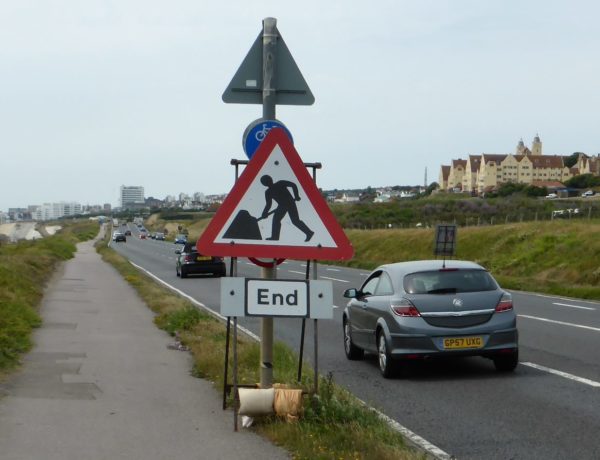Why is the speed slower at roadworks?
The speed limit around roadworks is often made temporarily lower because:
- There could be sharp changes in the height of the tarmac that could cause tyre damage
- There could be potholes which could cause tyre damage
- The surface could be slippery because of loose gravel or slick mud, leading to longer stopping distances
- Humans are working in close proximity to the road and could step out inadvertently, or trip into the road
- The road is often narrower with no escape options
- Machinery is in close proximity to the road and may need to be able to cross it safely
- There’s often a lot of visual clutter making it more difficult to perceive hazards
- Visibility may be reduced due to barriers or dust
- Stones can be thrown up which could injure a road worker.
On motorways, the roadworks speed limit is 60mph, unless otherwise shown. This was raised in 2020 to decrease driver frustration and cut journey times.
Do you need to slow down at roadworks, even if there’s no speed limit posted?
Legally, no. If there are cones and obvious roadworks that are taking place or have taken place recently, you should definitely exercise caution, though.
There might be roadworks machinery parked on the side of the road which obscures other hazards, or the road’s surface could be degraded.
When does the temporary speed limit end?
You’ll see an ‘end’ sign which signals the end of any temporary restrictions, including temporary speed limits that are associated with the roadworks.

Why are roadworks signs sometimes left on the road, even though no one is working there?
Sometimes signs are left there accidentally, but sometimes they remain as the road is bedded in. This is particularly so when coarse chipseal is used and loose stones are being shed as the road beds in.
- Understanding the National Standards for Riding Mopeds and Motorcycles
- Livestock Transport Rules UK: A Complete Guide to Animal Transportation Requirements
- The Role of Safety Advisers in Dangerous Goods Transport
- Sustainable Driving: Reducing Your Environmental Impact on the Road
- Developing Effective Lesson Plans for Driver Training
- UK Agricultural Vehicle Registration and Tax Relief
- Challenges of Transporting Radioactive Materials (Class 7)
- Exemptions and support for Clean Air Zone charges
- Navigating Legal Requirements: The UK Motorcycle Licensing Rules
- Safe Transportation of Agricultural Chemicals and Hazardous Materials
- Innovations in Vehicle Construction for ADR Compliance
- Motorcycle Recovery Operations: How to Recovery a Broken Down Motorbike
- Alternative Fuels in Agricultural Vehicles
- Carriage of Dangerous Solids in Bulk Containers
- Understanding Limited Quantity Exemptions in ADR